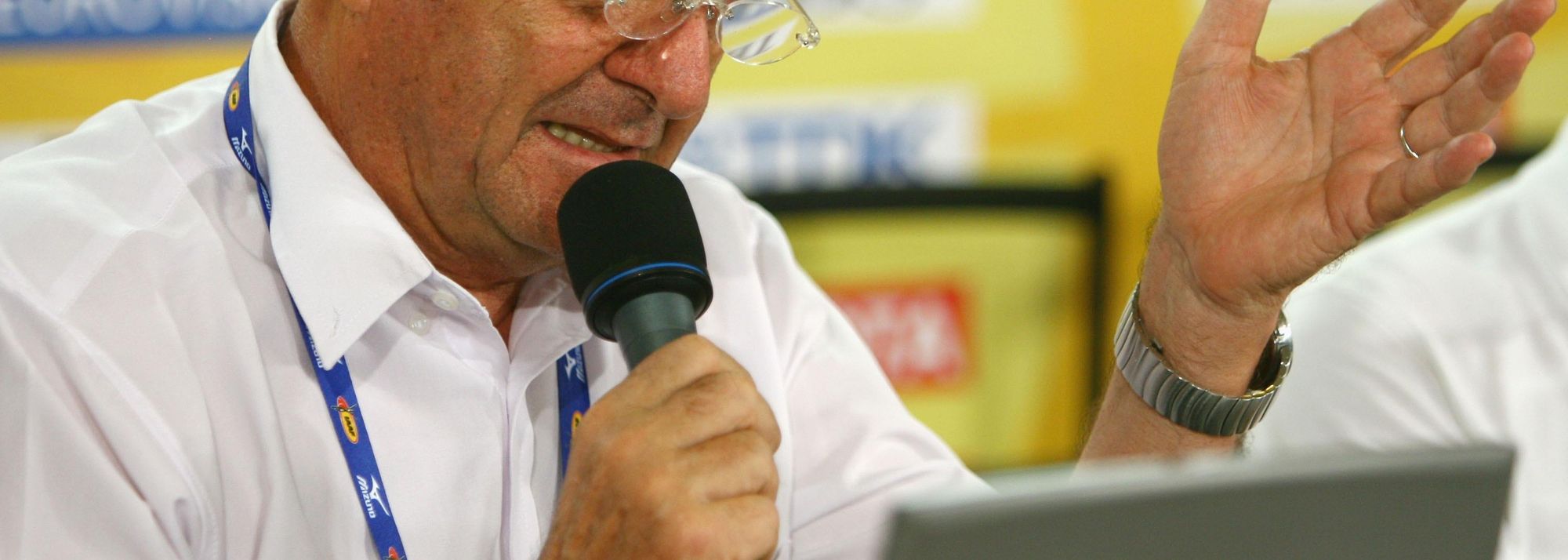Elio Locatelli (© Getty Images)
Dr. Elio Locatelli IAAF Members Services Dept Director (Development) and Professor Michiyoshi Ae, Leader of Biomechanics Project Team and Scientific Committee of Japan Association of Athletic Federation were the guest stars at the IAAF / LOC Daily Press Briefing which took place on Wednesday (29) of the 11th IAAF World Championships in Athletics, Osaka 2007, in Nagai Stadium.
The third day’s briefing was a themed event – IAAF Development in action
WHO - Dr. Elio Locatelli IAAF Members Services Dept Director (Development) and Professor Michiyoshi Ae, Leader of Biomechanics Project Team and Scientific Committee of JAAF; Nick Davies, IAAF Communications Director (MC).
Dr. Locatelli said that there were 9 Regional Development Centres (RDC) and 8 High Performance Training Centres (HPTC) founded by the IAAF around the world.
The development centres focus on education, technical and administration and the needs of the area. This means an investment of $3 million by the IAAF.
There are also 8 high performance centres to develop successful athletes. The IAAF hopes that in the future all Federations can have at least each produce one ‘B’ standard qualified athlete.
Professor Ae said his Biomechanics project consisted of 37 staff, thirty one to take video data and six to analyse the data. They will publish reports within in a year and will present papers about their findings at training camps. The project started in 1991 and half the members are from University and half are graduates.
Dr. Locatelli said there is a model way to run a 100 metres World record. They have the data such as analysis of acceleration, deceleration and stride pattern. He said for example that Tyson Gay takes 44 strides whilst Asafa Powell takes 45 to run 100 metres. However Tim Montgomery took 49 and Justin Gatlin took 41. They have studied why the difference. He said that Powell changed his stride pattern after Gay reached him in the final here in Osaka. Their studies are there to help coaches. He also said that he was pleased to see journalists also showing interest.
A question from the audience asked about what happened with the Russian athlete in the Pole Vault the previous evening, when the bar did not fall but she was given a failure.
The panel were asked about the problem at the pole vault. Dr. Locatelli and Chris Turner, IAAF Editorial Manager (speaking from the audience) jointly responded and explained why the vault of Tatyana Polnova was disallowed after she apparently cleared the height. The rule 183.2a was strictly applied which states the bar must remain on the pegs. The bar had dislodged at one end and was resting on another part of the apparatus. Polnova was shown a video so she could see why it was disallowed.
Asked as to what the IAAF is trying to do for women and why so few women were involved in some countries Dr. Locatelli said that it was due to the specific social and cultural situations of a country. The IAAF cannot solve the social situation of a country but they encourage countries and people to do more for women.
Asked about the situation when it was claimed that Eritrean athletes had to sleep on the floor in the lobby of a hotel, Nick Davies said an unfortunate mix up had occurred but the problem had now been resolved. He also responded to a question on results of doping control, saying that to the end of Saturday there had been no positives.
LOC News Team



